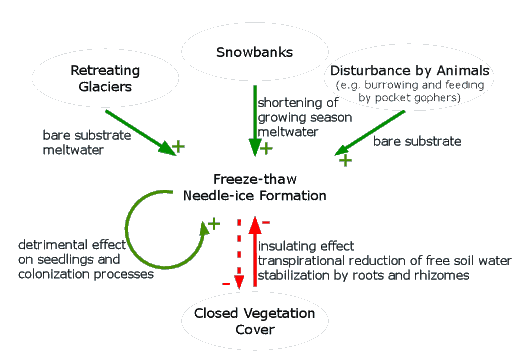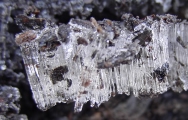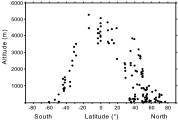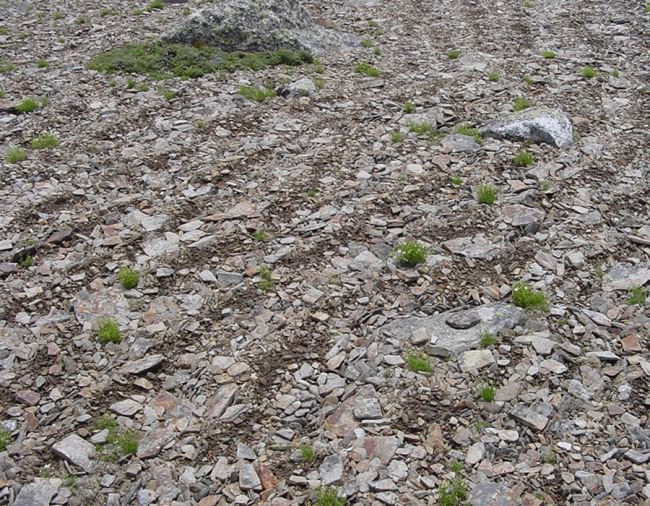 |
|
|
|
|
|
|
Repeated freezing and thawing may lead to the formation of needle-ice, which results
in the lifting up of the upper few mm or cm of soil. When does needle-ice occur? Several conditions must coincide to allow the development of needle ice. These include temperature fluctuations around the freezing-point, a sufficient supply of moisture and sparse vegetation cover.
|
1 - Needle-ice (109K) |
|
Where does needle-ice occur? Needle-ice can be observed on all continents. In the tropics, it is restricted to high mountain areas. At moderate latitudes, it is particularly common in the alpine environment because of the higher frequency of freeze-thaw cycles compared to lowlands and the often higher soil moisture. Needle-ice formation is a frequent phenomenon in the tropics and may occur throughout the year (diurnal climate). In the temperate zone of the northern hemisphere, it mostly occurs at the beginning and end of the winter period, and only infrequently at the height of summer. At very high latitudes, needle-ice formation is restricted to the summer months. |
2 - Altitude-Latitude Relationship |
|
|
Why is needle-ice important? Intense freeze-thaw cycles of water-saturated soils result in high internal soil disturbance and promote small-scale erosion. The unstable substrate is unfavourable for plant colonization because seedlings may be damaged by frost heaving Recently disturbed surfaces are susceptible to needle-ice formation that may delay development of plant cover in these bare patches. The intensity and frequency of needle-ice activity are usually not sufficient to affect established vegetation with a dense ground cover. However, locations exposed to frequent and intense frost soil phenomena may be bare of vegetation. |
 |
3 - A closed vegetation cover impedes needle-ice formation (red arrow) |
|
During a freezing and thawing cycle particles of different size may be moved to different extents. This leads to a process of frost sorting which, over a long period of time can produce different types of patterned ground, e.g. stone stripes or polygons. These provide a variety of microhabitats which may persist for many years and are colonized by different plant species. |
4 - Stone stripes (163K) |
|
Frost heave is also a major cause of solifluction
found on many steep slopes in alpine areas. Solifluction lobes and terraces may creep down at speeds of several
cm per year. In areas of very intense solifluction, this ground movement may even
impede vegetation development. In the afro-alpine zone, solifluction seems to be the
most serious factor limiting higher plant growth. |
29 August 2011 |
||
| |
||


